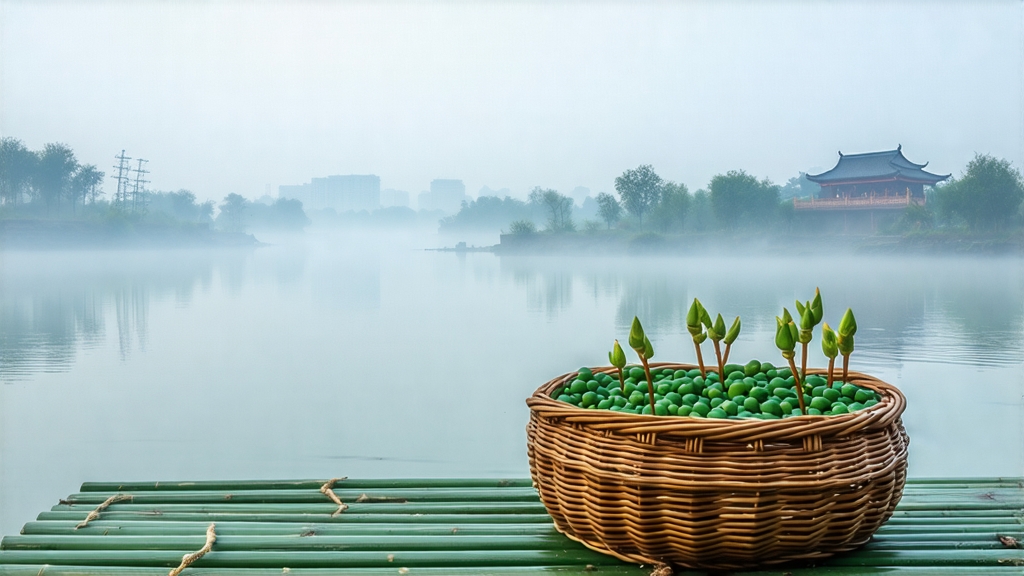
Biluochun, whose name translates literally to “Green Snail Spring,” is one of China’s ten most celebrated teas, yet it remains a delicate secret outside serious tea circles. Grown on the mist-locked, fruit-tree-capped hills that rim eastern Taihu Lake in Jiangsu Province, this emerald-green tea is prized for its tiny, tightly spiraled leaves, downy silver tips, and an aroma so fragrant that the Qing-dynasty Emperor Kangxi is said to have renamed it on the spot when he first encountered it in 1699. Originally the farmers called it “Xia Sha Ren Xiang,” or “Scary Fragrance,” because its perfume was so penetrating that courtesans feared it would betray their presence. The emperor, enchanted by both the leaf shape and the spring season of harvest, rechristened it Biluochun, and the name has endured for more than three centuries.
Although all Biluochun comes from the same narrow terroir, three distinct horticultural styles exist. The “Wild Original” bushes, scattered among apricot and peach trees on Dongting Mountain’s east slope, are seed-propagated descendants of Song-dynasty plants; they yield the smallest, most aromatic leaves but only a few kilograms each spring. “Selected Clone” gardens, planted in the 1980s, balance yield and quality, producing the bulk of premium market tea. A third style, “Terraced Field Biluochun,” grows on recently reclaimed hillsides; while still fragrant, it lacks the layered complexity of mountain tea and is usually reserved for everyday consumption. International buyers often encounter only the clone version, yet connoisseurs seek the wild original, recognizable by its mouse-whisker hairs and an almost neon jade color when dry.
The crafting of Biluochun is a race against dawn. Pickers start at 5 a.m. when the lake mist is still thick enough to bead on leaf surfaces; the humidity keeps cells turgid and prevents premature oxidation. Only the standard “one bud with one unfolding leaf” is plucked, ideally before 9 a.m. Once the wicker baskets arrive at the cottage factory, the leaves are spread no thicker than two centimeters on bamboo trays and allowed to wither for precisely 45 minutes—long enough to lose the grassy edge, short enough to preserve the amino acids that create sweetness. The pivotal step is “Qing Guo,” or green-killing, performed on a cast-iron pan heated to 180 °C. The master tosses 250 grams of leaves at a time, using only his bare fingers to judge temperature by touch; within three minutes the enzyme activity must be halted while 30 percent of moisture remains. Immediately afterward comes the unique “Hui Guo” or return-to-pan phase: the temperature drops to 70 °C and the tea is rolled into tight spirals against the hot metal, a motion that took apprentices years to perfect before mechanized imitation rollers arrived. Finally, the leaves are dried over a gentle charcoal brazier covered with a thin sheet of Xuan paper; the paper prevents scorching yet allows the tea to absorb a faint smoky note that complements its natural fruitiness.
Water choice is critical when brewing Biluochun. The classical text “Cha Shu” recommends water drawn from the middle of Taihu Lake at dawn, but modern labs show that low-TDS spring water at 8 °C storage temperature best preserves its volatile terpenes. Heat the water to 75 °C—never above 80 °C—because the leaf is so tender that hotter water literally cooks the trichomes, flattening aroma. Use a tall, thin glass rather than a gaiwan; the upright walls allow the famous “tea rain” phenomenon in which silver hairs detach and drift downward like micro-snow. For every 200 ml of water, measure 3 grams of dry leaf. After pre-warming the glass, fill it one-third full, gently drop the tea onto the surface, and wait fifteen seconds for the buds to hydrate. Then top up with water in a high, thin stream that sets the leaves spinning. The first infusion should steep no longer than forty seconds; subsequent infusions add ten seconds each. A five-gram session can yield seven infusions, the third being the most balanced, the fifth revealing a surprising lychee note.
Professional cupping of Biluochun follows a 3 g / 150 ml / 5 minute standard, but the true test is the “cold aroma” assessment. After the final infusion, place the spent leaves on a petri dish and allow them to cool to room temperature. Superior grades